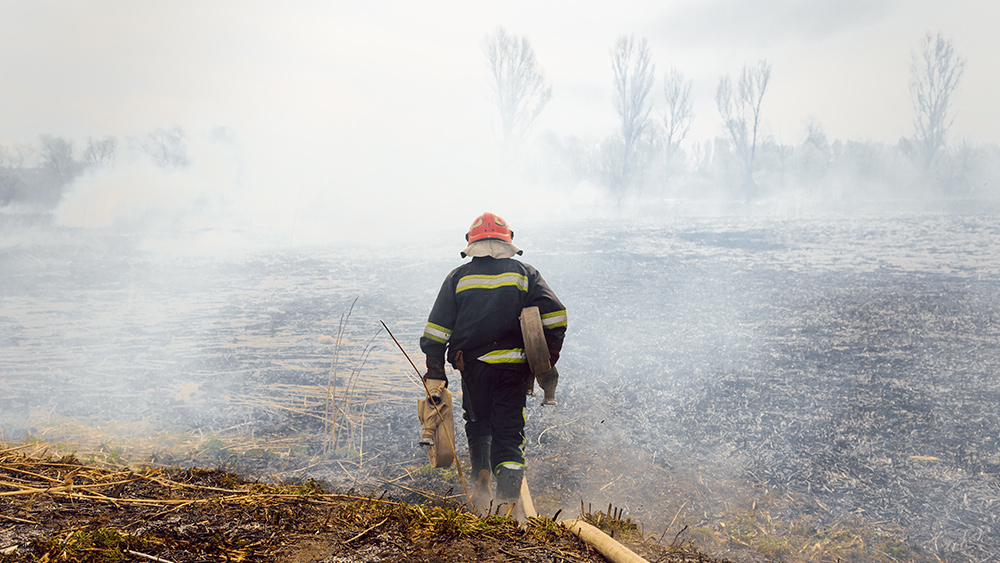 Parler
Parler Gab
Gab
- 2,4-D-based herbicides ignite like gasoline, with heat release rates rivaling diesel fuel and automotive oil.
- Glyphosate products, while less flammable, still emit toxic gases when exposed to heat, including hydrogen cyanide and ammonia.
- "Inert" ingredients — often undisclosed — dramatically increase flammability and generate deadly byproducts like benzene, chlorophenols, and polycyclic aromatic hydrocarbons (PAHs).
- Firefighters and first responders face extreme risks, with combustion byproducts exceeding safety thresholds by thousands of times.
- Historical pesticide fires (Basel, Arkansas, Bayer CropScience) prove these disasters are not hypothetical — they’re a recurring threat.
The flammability crisis: Herbicides burning like fuel
The study tested four commercial herbicides, including glyphosate and 2,4-D formulations, under controlled combustion conditions. The results were alarming: 2,4-D-based products ignited almost instantly, with heat release rates soaring to 932–976 kW/m² — comparable to heptane and diesel fuel. Even glyphosate-based herbicides, which didn’t ignite in initial tests, released toxic fumes when heated, including hydrogen cyanide (HCN), a lethal asphyxiant used in chemical warfare. Dr. Anna Stec, a co-author of the study, warned: "These products are not just plant killers — they’re chemical time bombs. When they burn, they release gases that can overwhelm emergency responders and linger in the environment for years."The inert ingredient deception
Regulators often dismiss "inert" ingredients as harmless additives, but the study proves otherwise. These undisclosed chemicals—frequently alcohols, surfactants, and natural oils—radically alter flammability. For example:- Tall oil fatty acids (found in glyphosate formulas) boosted combustion.
- Chlorinated compounds in 2,4-D produced dioxin-like chlorophenols, linked to cancer and hormone disruption.
- 1986 Basel Fire (Switzerland): A Sandoz warehouse blaze dumped 30 tons of pesticides into the Rhine River, causing mass fish die-offs.
- 2008 Bayer CropScience Explosion (Virginia): A blast released methyl isocyanate — the same gas behind the Bhopal disaster—killing two workers.
Firefighters adversely affected on the front lines
Firefighters battling pesticide blazes face double the risk of cancer, cardiovascular disease, and respiratory failure. The study detected:- Benzene at 610,000 ppb (6,000 times above safe limits).
- Formaldehyde and hydrogen chloride at levels causing immediate lung damage.
Lethal injection: Twin babies DIE days after routine vaccinations
By Ava Grace // Share
Governments continue to obscure COVID-19 vaccine data amid rising concerns over excess deaths
By patricklewis // Share
Tech giant Microsoft backs EXTINCTION with its support of carbon capture programs
By ramontomeydw // Share
Germany to resume arms exports to Israel despite repeated ceasefire violations
By isabelle // Share










